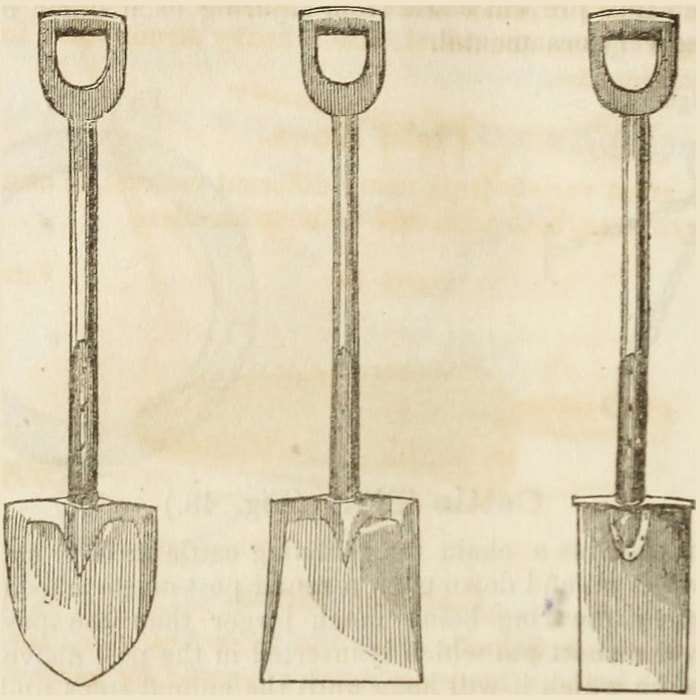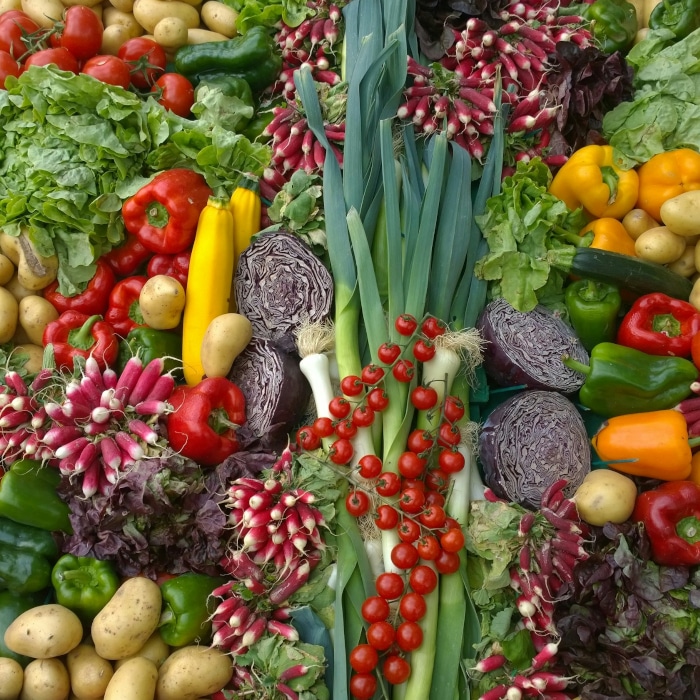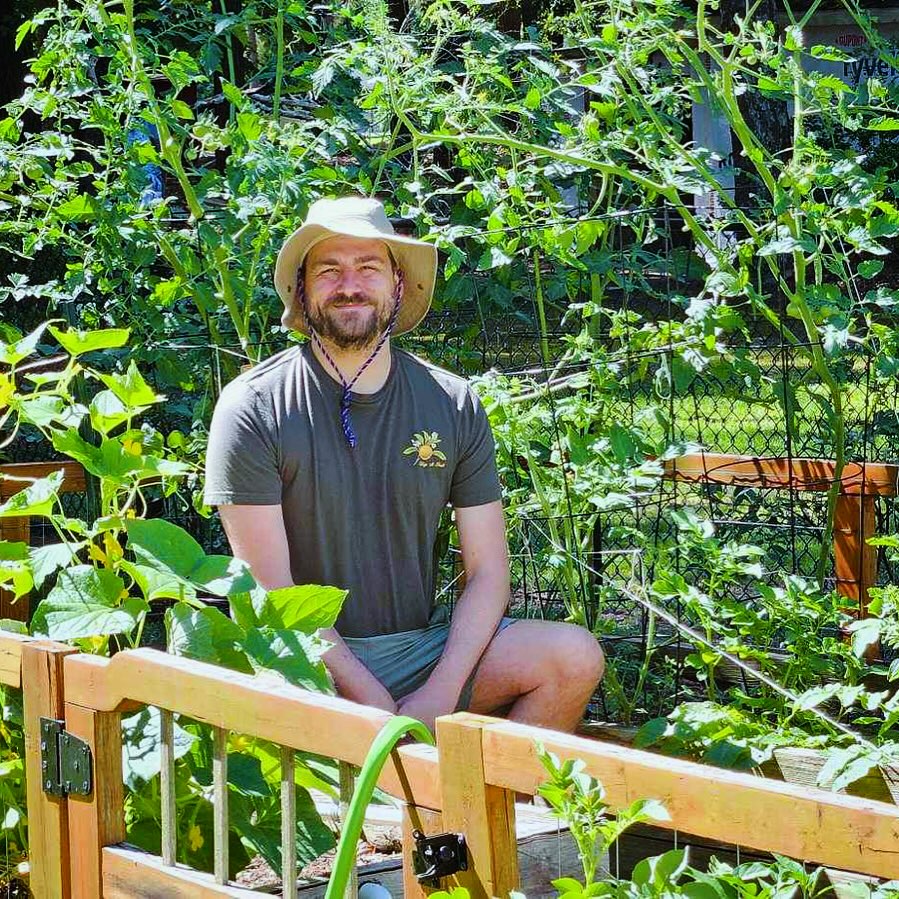Creating a vegetable garden can be a mix of excitement and challenge, particularly when it comes to preparing the soil for vegetable garden—a foundation as necessary as it is complex.
Many gardeners, including myself, have faced the tough task of transforming various types of soil into a fertile vegetable garden. The frustration of working the ground, only to see minimal progress, can frustrate even the most enthusiastic gardener.
Yet, the solution lies not in a single magical fix, but rather in a commitment to understanding and nurturing your soil. It is an ongoing process of blending age-old wisdom with modern scientific discoveries.
This approach changes gardening from a chore into a rewarding experience, revealing the true secret to a thriving vegetable garden: a deep relationship with the soil.
TL;DR
We aim to:
- Explore the critical importance of organic matter, well-draining yet moisture-retentive properties, fertility, balanced pH, and loose, well-aerated structure in creating the ideal soil for vegetable gardens.
- Emphasize conducting soil tests as a foundational step to adjust soil improvements and practices for enhancing the health of the soil for vegetable garden success.
- Advocate for the addition of compost, leaf mold, and aged manure to significantly enrich soil organic matter content.
- Discuss the benefits of no-till gardening in preserving soil structure and promoting a healthy soil ecosystem.
- Highlight the need for balancing water retention and drainage through organic matter addition and the use of raised beds, along with the importance of supporting microbial life and adjusting soil pH for excellent vegetable growth.
Understanding Your Starting Point
Growing a healthy and productive vegetable garden starts with the ground your plants will call home.
The perfect soil for vegetable garden is not just any dirt, but actually a nurturing environment, full of life and balanced to support wonderful plant growth. I found such wonderful growth by using Coast of Maine Castine Blend Organic in my raised bed.
Garden soil highlights several important characteristics:

Three spades, essential tools for turning soil in a vegetable garden.
Rich in Organic Matter
The heart of productive soil lies in its organic matter content. This works like a sponge, holding onto moisture and essential nutrients, which are slowly released to plants. By adding compost, leaf mold, and aged manure, you introduce helpful microbes and encourage earthworm activity, further improving soil health.
Well-Draining yet Moisture-Retentive
Ideal organic soil manages to balance draining excess water to prevent root diseases and retaining sufficient moisture to minimize the need for constant watering.
Achieving this balance is necessary, especially during periods of drought or extreme heat, ensuring plants stay hydrated and healthy.
Fertile
Soil fertility refers to the soil’s ability to provide essential nutrients to plants in the right amounts. Nitrogen, phosphorus, potassium (N-P-K), and a number of micronutrients like calcium and magnesium are important for plant growth.
Fertility can be maintained and improved with regular additions of compost and organic fertilizers.
Balanced pH
Soil pH significantly influences nutrient availability and plant health. A pH range of 6.0 to 7.0 is generally preferred for vegetable gardens, as it ensures nutrients are readily available to plants.
Testing soil pH regularly and adjusting it with lime or sulfur helps maintain this balance, promoting healthy plant growth.
Loose and Well-Aerated
Good soil structure is essential for air circulation and root expansion. Soil should be loose and crumbly, allowing plant roots to access oxygen and nutrients easily. Preventing compaction and incorporating organic matter are key to maintaining a healthy soil structure.
My own vegetable gardening experience began with a simple yet revealing soil test. This early step informed me of the soil’s type, nutrient levels, and pH, guiding my efforts to adjust soil improvements and practices specifically for the needs of my garden.
This task informed me of the selection of strategies to enhance soil health.
Understanding the soil for vegetable garden is a continuous process, one that grows with each season. As you work to integrate organic matter, adjust pH levels, and observe changes in plant health and soil texture, your connection with your garden deepens.
This relationship doesn’t just lead to better soil—it improves your entire gardening experience, making each season more rewarding than the last.

Fresh vegetables, grown in organic potting soil.
The Role of Organic Matter
A truth that I have learned through gardening is the power and importance of using organic matter. My experience taught me that compost, aged manure, or leaf mold could greatly enrich the soil, improving its structure and fertility.
The regular use of organic materials has since become an important part of my gardening practice.
No-Till Gardening and Its Benefits
Adopting a no-till approach preserved soil structure, encouraged helpful microbes, and reduced erosion.
This method views the soil for vegetable garden as a living ecosystem, producing noticeable improvements in soil health and plant life.
Optimizing Water Retention and Drainage
Learning to balance water retention and drainage was very important, especially in areas with heavy clay or sandy soils.
Adding organic matter and creating raised beds were effective strategies, making sure there was consistent moisture without over soaking.
Encouraging Microbial Life
Soil microbes play an important role in nutrient cycling and supporting plant health.
Shifting towards organic improvements supports a healthy soil microbiome, improves plant health, and contributes to sustainable gardening practices.
Monitoring and Adjusting Soil For Vegetable Garden pH
Adjusting soil pH became a critical aspect of soil management, making sure vegetables could access the nutrients they needed.
This understanding led to healthier crops and a more productive garden.

An assortment of fresh vegetables, representing the bounty that well-maintained soil for a vegetable garden can produce.
Conclusion
Enriching your soil for vegetable garden is a process of understanding, patience, and commitment. Recognizing the qualities of good soil for vegetable gardens and working to achieve them transforms gardening into a rewarding experience.
As you work, remember that each effort to improve your soil brings you closer to a productive garden. Embrace these practices, experiment, and enjoy the fruits of your labor in a healthy vegetable garden.







